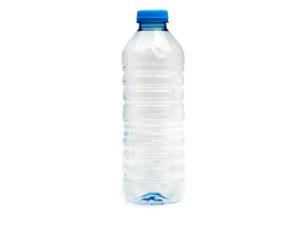To help prevent waste from entering the environment and improve the input and output of recycling streams, it is important for companies to regularly review packaging portfolios. Regular reviews can help teams identify opportunities to reduce packaging, remove problematic elements and/or switch to material alternatives. Many companies are already doing this to support corporate sustainability goals and are joining coalitions and pacts, such as the Consumer Goods Forum (CGF) and Canada Plastics Pact (CPP), to further efforts and create widespread industry momentum.
Overview of CGF Golden Design Rules
Throughout 2020 and 2021, CGF released nine Golden Design Rules for packaging to help reduce the complexity of recycling processes while increasing recycling rates. Poor packaging design, problematic materials and excess packaging can all exacerbate recycling problems.
A snapshot of the rules has been provided below but further detail can be found on CGF’s website and the Canada Plastics Pact Golden Design Rules Microsite. The rules are voluntary, independent and time-bound commitments.
Polyethylene Terephthalate (PET) is one of the most commonly used plastics for food, beverages, home applications and more. To increase the value in the recycling stream, CGF emphasizes the importance of using transparent and uncoloured PET or transparent blue or green. Beyond this, companies need to consider material choice, adhesives and size of sleeve/label to help create efficient recycling processes and reduce contamination.
Another way to increase recyclability of plastic packaging is to remove problematic elements including: undetectable carbon black; PVC or PVDC; EPS or PS; PETG in rigid plastic packaging; and no oxo-degradable plastics.
For flexible pack types, the goal is to have a maximum of 30% headspace or less across product categories (e.g., health & wellness, dry groceries, shelf stable foods, pet food, water & beverages, etc.).
Use plastic overwrap only when necessary for categories including food (e.g., confectionary, canned and tinned food, beverages, etc.) and non-food (e.g., home care, personal care, etc.).
This rule is dependent on regional design guidelines so packaging can be optimized for existing recycling programs, where possible. If packaging is not accepted by regional programs, steps should be taken to use transparent and uncoloured PET or transparent blue or green PET. Other steps include using minimal to moderate direct printing, ensuring materials and adhesives are not problematic for recycling, etc.
This rule is dependent on regional design guidelines so packaging can be optimized for existing recycling programs, where possible. If packaging is not accepted by regional programs, CGF’s recommended steps include:
- Maximizing polyolefin content:
- Preferably >90% mono PE, or >90% mono PP
- Minimum either >80% mono PE, >80% mono PP or >80% mixed polyolefins
- Density <1 g/cm3
- Each barrier layer should not exceed 5% of the total packaging structure weight
- No PVC, PVDC, fibres, aluminium foil, PET
For labels and closures (e.g., adhesives, materials, inks, sizes, etc.) ensure choices are not problematic for recycling and do not use fillers that increase the density of the packaging to >1g/cm³. CGF also recommends using minimal or moderate direct printing.
Eliminate unnecessary plastic (where it doesn’t compromise supply chain and operational efficiencies), use post-consumer recycled content, and switch to reuse models or alternative materials, where possible.
Include recycling or reuse instructions on consumer plastic packaging.
Many international and Canadian companies have made commitments towards some or all of the CGF Golden Design Rules and collaborative efforts and discussions are ongoing through many different forums, including the Canada Plastics Pact.
Why certain materials are problematic for recycling systems

Expanded Polystyrene (PS) or Polystyrene
Since it is frequently used as packaging for food and drink (e.g., take-out containers), it is often contaminated and difficult to clean. Beyond this, it is not economically viable to recycle and often ends up in landfill.

Carbon black plastics
Depending on the technology (e.g., Near Infra Red Technology), it may not be able to detect dark-coloured plastics during the sorting process so it often ends up in landfill.

Oxo-degradable
Breaks down into small plastic fragments contributing to microplastic pollution. Can be found in packaging such as shrink/stretch film.

PETG
Polyethylene Terephthalate (PET) that has been modified with glycol – Commonly found in drinking bottles, PETG can contaminate PET recycling streams reducing the quality of recycled materials.

PVC or PVDC
Polyvinylidene chloride or polyvinylidene dichloride – Contains many additives that disrupt recycling of other materials.
Packaging considerations
When exploring packaging/material alternatives, it is important to recognize that different product categories (e.g., food, general merchandise, clothing, etc.) will have their own unique set of considerations.
It is important to ensure that packaging helps to prevent products from being damaged (e.g., dents, scratches, food spoilage, etc.) as this will result in increased product returns and waste. If this is a regular occurrence, it can also negatively impact a brand’s reputation.
Heavier packaging can make products more difficult to handle and increase shipping/transportation costs. If the product itself is heavy (e.g., appliances, furniture, etc.), the packaging needs to be durable while providing cushioning.
Depending on where manufacturers, suppliers and distribution centers are located, products may be traveling greater distances with multiple touchpoints requiring additional packaging for protection.
When selling goods in physical retail locations, goods are often shipped in-bulk directly to distribution centers/stores. In comparison, as ecommerce becomes more popular (particularly due to the pandemic), products have to be packaged individually while prioritizing durability since there are more touchpoints along the ecommerce supply chain (e.g., manufacturer, distribution center, postal service, etc.).
When selecting packaging, companies need to consider what their corporate sustainability goals are. For example, is there a commitment to recyclability, compostability, circular economy etc. Beyond this, companies need to consider whether sufficient infrastructure exists to properly handle the material (this may vary by jurisdiction).
Communicating with vendors
After reviewing your packaging portfolio internally, it is important to educate vendors throughout the supply chain to ensure everyone is on the same page. When vendors are educated about corporate commitments and goals, it will be easier to identify partnership opportunities and vendors will be more likely to approach companies directly with packaging solutions.
When looking to implement changes, it is important to have realistic timelines as vendors may have already pre-ordered packaging (particularly during the pandemic to prevent supply chain disruptions). Therefore, vendors may not be able to make changes right away but a timeline can be identified that works for all parties. It can also be helpful to identify each part of the packaging to ensure it can be functionally recycled in different jurisdictions (can get complex with multi-part packaging).
Beyond this, it can be beneficial to test packaging changes with smaller product ranges before expanding to other brands or product categories. In some cases, recycled materials will be more expensive than virgin materials but companies can start to reduce costs with volume. Ultimately, the more companies that engage with vendors to promote sustainability and innovation, the more widespread it will become.
Alternatives (e.g., alternatives to polystyrene for product protection)

Removal of unnecessary packaging
Before switching to packaging alternatives, it is important to identify whether all packaging components are necessary or if certain elements can be removed. For example, if a product has multiple parts, is there a better way to fit pieces together to reduce shifting/movement or would a smaller box prevent movement and negate the need for additional packaging.

Compostable peanuts
When having discussions with suppliers, it is important to distinguish between certified compostable and biodegradable options. Suppliers may have a different definition or understanding of the terminology so there needs to be open dialogue, including what you’re hoping to achieve with the packaging and whether or not it can be handled by current composting infrastructure.
Many biodegradable alternatives cannot be broken down properly at composting facilities or will lead to increased rates of contamination (e.g., may contain plastic or synthetic parts). Due to this, many Canadian municipalities (e.g., City of Calgary) ask consumers to throw away biodegradable peanuts so they can be landfilled.

Corrugated cardboard (with flutes)
Corrugated cardboard is a great alternative when materials need strength and durability while also providing products with a certain level of protection. It often contains recycled content which helps to promote a circular economy while being reusable/recyclable. The lack of dyes/additives used during production also make it easier to recycle.
The larger the size of the flute in the cardboard, the greater the strength and cushioning (good for heavier products/stacking). In comparison, cardboard with smaller flutes is easier to fold and print. Depending on your needs, changing the flute size can help reduce the size of the overall package.

Molded fiber
When looking for compact protection, molded fiber is a great alternative to traditional plastics. Since it can be molded into a specific shape, it helps to reduce the overall size of the package while cushioning products and absorbing moisture/odour. The shape can also facilitate product nesting and stacking which helps to reduce shifting which can contribute to product damage (e.g., electronics with multiple parts/cords). Companies can also ship greater quantities of goods since packaging can stack/nest. Depending on the fiber, the material can be recycled/composted.

Shredded paper
Shredded paper is a great way to protect products since it is lightweight and can be made from recycled paper (e.g., newspapers). Shredded paper can be used to fill boxes to cushion products, particularly if they are fragile.

Air pillows/cushions
Air-filled pillows or cushions are a lightweight way to fill empty gaps around and/or between products. In comparison to traditional materials like polystyrene, air pillows require significantly less material (thin film inflated with air) making them more economic and sustainable. They can also include recycled content and be reused until punctured. It is important to note that the film can get caught in recycling machinery so local infrastructure will need to be taken into consideration to ensure optimal end-of-life outcomes.
